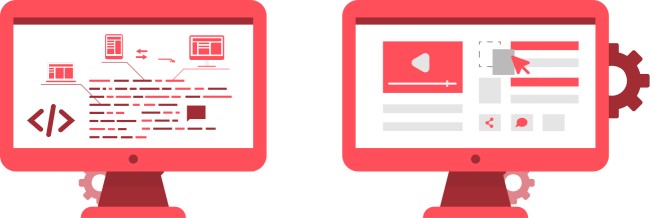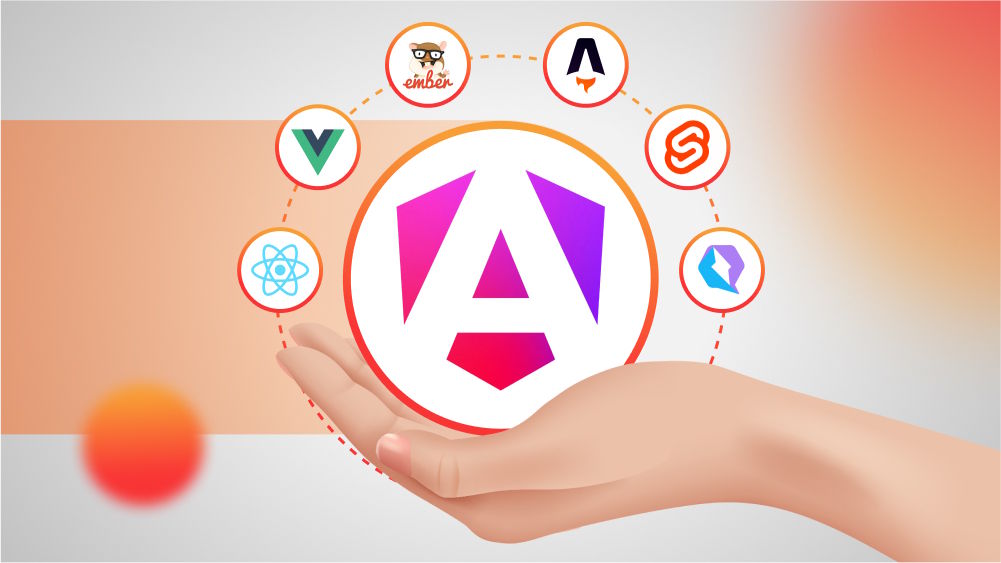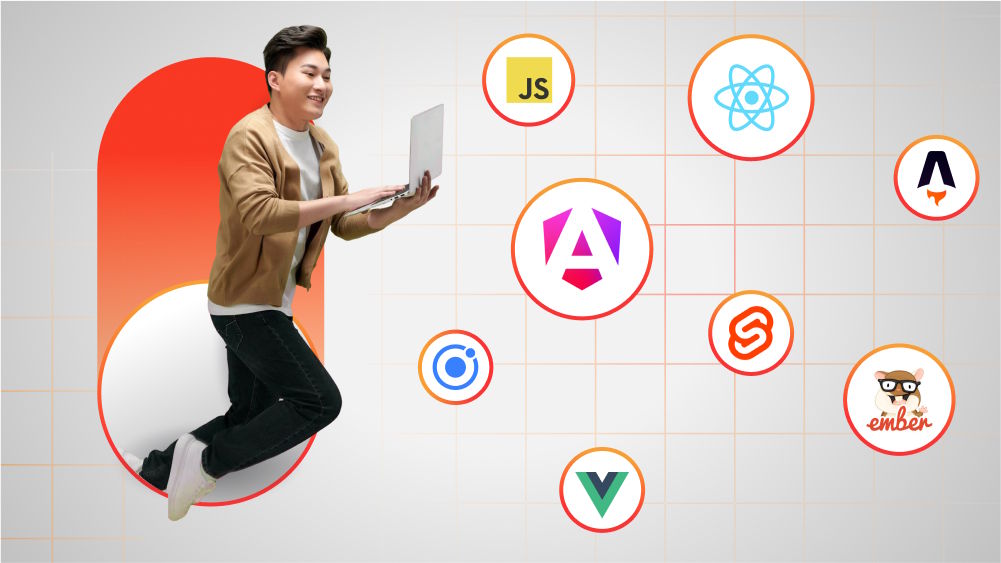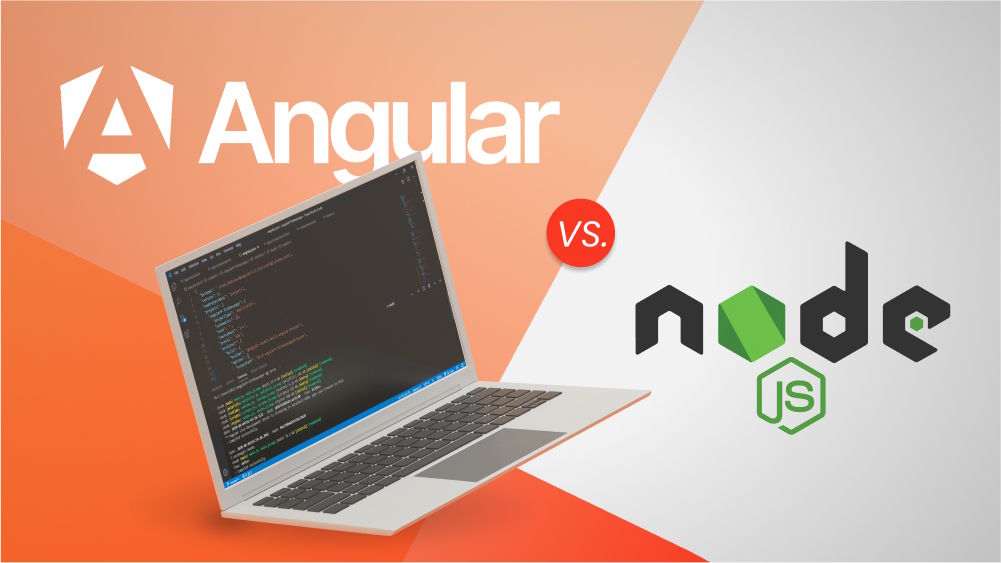Low-code vs. No-code Frameworks: Which One to Choose?

Content Map
More chaptersYou might have heard the terms low-code and no-code frameworks used interchangeably to describe a software development platform. Both are becoming more popular in the software development industry. But what are they? What are the key differences between the low-code and no-code platforms? And when should you use one over the other? The debate around these questions has been going on for a while now, and it is not slowing down anytime soon. This article will give you a closer look at how these two platforms differ, their similarities, and which types of projects each is best suited for.
Low-code vs. No-code: The Similarities

Although low-code and no-code frameworks are different kinds of software development platforms, they share some similarities too. Most people don’t realize how similar low-code and no-code frameworks are. This is because both use a drag-and-drop user interface to make it easier for non-developers to build applications without needing any programming skills. In addition, these frameworks allow users to create custom objects that can be reused across projects, saving time from making the same thing repeatedly.
The only difference between the two is that low-code platforms require coding knowledge while no-code platforms do not. However, there are some low-code tools that have been designed with a drag-and-drop system so they can function as no code too. To further understand the differences between low-code and no-code frameworks, let’s dive into their definitions.
What is a Low-code Platform?
A low-code platform is a type of software that enables IT organizations to quickly design, deploy and manage applications without traditional programming. This revolutionary technology has been designed from the ground up with non-technical end-users in mind. Low-code platforms enable businesses to deliver better digital experiences faster than ever by automating many of the manual processes traditionally required to build an app.
Low-code platforms provide a complete ecosystem for rapid app development, including everything you need – prebuilt modules, data connectivity tools, and integrations – so your team can focus on delivering outstanding customer experiences instead of wasting time on routine tasks like coding or configuring databases.
With low-code platforms, you can rapidly build applications that integrate existing business processes and data, streamline operations across the enterprise, and provide better customer experiences. You can quickly create responsive mobile apps that work across all devices and screen sizes, as well as cloud-ready desktop apps. Plus, because low-code platforms are built on HTML5, they can be used to design applications that run equally well across the office and the web – uniting your business in one cohesive user experience.
What is a No-code Platform?
A no-code platform is a software development tool that allows you to build an application without coding. This technology can be beneficial for both developers and non-developers looking to create applications without much time or technical knowledge. A no-code platform uses various tools and services to enable you to create customized mobile apps using a drag-and-drop interface, phone camera uploads, pre-designed templates, or by importing a design from Photoshop or Sketch.
The process of application development with this technology is easy and user-friendly, even for someone with little experience in programming. The process starts by selecting one of three templates: business, chatbot, or game. These templates allow you to choose which type of app you want your development team to work on during the building process. All you need to do is to pick an option and customize it. You get total control over how the app looks like and functions since all aspects are customizable through drag-and-drop features. Some no-code platforms let users link third-party apps to access their features within the app. There are also no-code platforms that offer integration with existing custom-coded apps.
In short, no-code platforms are attractive for businesses that do not have a dedicated IT department or lack the technical expertise to develop an application from scratch.
Low-code vs. No-code Frameworks: Which one to choose?
As we already mentioned, the debate about low-code vs. no-code platforms is still inconclusive. To decide one is better than another depends on many factors, such as your business needs, the type of application you strive to build, the timeline for project completion, and others. So, you’d better understand your requirements first before making a choice. Then, you should have a closer look at the differences between the low-code platforms and no-code platforms. They are confusing but still distinct.
The main difference between these two is that the no-code platform uses predefined options that are not as customizable as low-code development. Low-code is a full-stack development environment with drag-and-drop capabilities to create software without coding knowledge. On the other hand, no-code refers to an interface where you tap on what you want an app to do. The two have different use cases because one is more suited for enterprise-level projects while the other works well for simpler tasks like creating mobile apps or websites.
The low-code platform is the classic, old-school way of building software. With this type of development, you can create a completely customized system that suits your needs and fits your business model perfectly. On the other hand, no-code platforms are a newer approach that provides an easier way for companies to develop their websites by simply dragging and dropping blocks of prebuilt components onto the page.
Conclusion

Ultimately, it is up to which path you choose when deciding how to build software for your company. When it comes to low-code vs. no-code frameworks, let’s take a quick comparison:
- The no-code route provides smaller companies an opportunity to build their websites without having to hire expensive outside firms or spend tons of time learning code from scratch.
- Low-code is a more flexible option that allows companies to create software that exactly fits their business model.
Your company must take a hard look at the business model and determine which option is more suitable. So, it would be best if you weigh all the pros and cons of low-code and no-code platforms to choose your best one.







